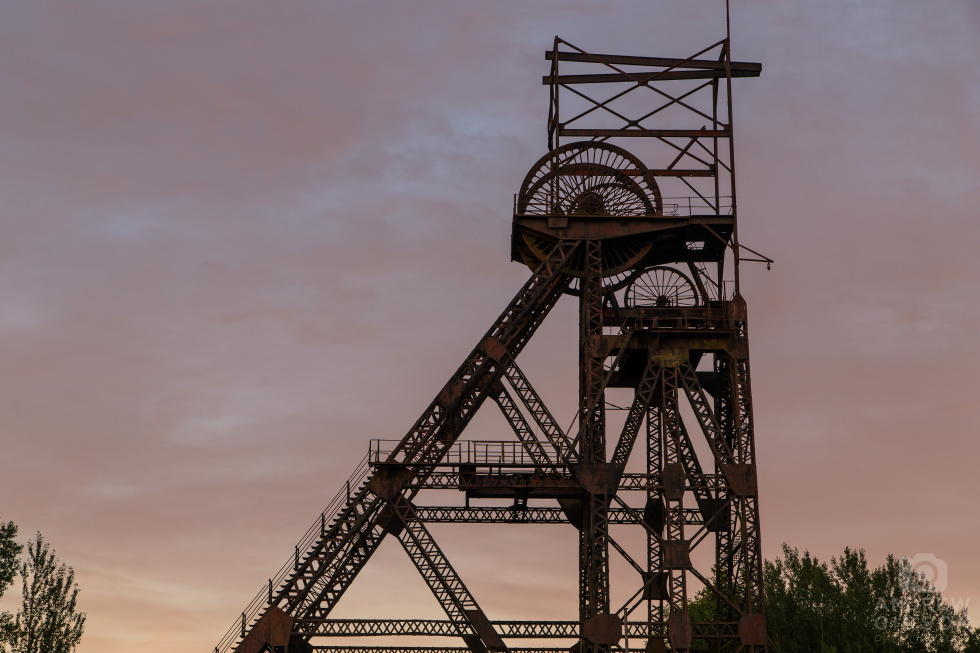Time was, this was a familiar sight across the county, but you’re now looking at the last surviving bit of colliery ephemera from the Lancashire coalfield. To be honest you’d be hard pressed to find much that remains of this once dominant industry anywhere in the country but Lancashire seems particularly hard done by given its historic importance. In fact without paying much attention I hadn’t even realised that coal was once king in my home county at all…
In its heyday the Lancashire coalfield was actually one of the most prolific in the country and it figures clearly in the memory of people still in good health. Propelling the Industrial Revolution it led to the first canals and the steam engines that powered a thousand cotton mills. But times change. Production had peaked prior to the first world war and decline had been steady, but with the dawn of the 1960s the National Coal Board had started closing pits, in many cases without even coming close to exhausting plentiful reserves. In 21st century Britain it seems there’s just no place for it: we have no deep mines left and the remaining coal fired power stations are scheduled to be decommissioned by 2025. Cleaner air aside, the loss of mills, chimneys, cooling towers and headgear from the landscape really is changing the architecture of the land for the worse. These once iconic characteristics of the north are disappearing at an alarming rate now and making way for a combination of the increasingly bland and the totally insipid – which makes seeking it out and seeing it before it’s gone – or better still saving it – all the more important.
Astley Green was closed in 1970 – without exhausting the reserves below. The headgear from the number 1 shaft is listed as a scheduled ancient monument and along with its steam winding engine house and a few ancillary buildings now comprises the county’s mining museum. I’d say it was worth a visit but we weren’t expecting it to be open and it was already getting late, so we head to the nearest pub for something to eat without finding out. I’ll say it anyway though. These things always are worth a visit, and if you plan it on the right day you’ll even find the engine running. It’s certainly my intention to stop by again.
On this occasion though we’d been checking out some of Yorkshire’s old mills (another dwindling asset), and I had an idea in my mind that I wanted to visit Astley on the way back to shoot the silhouetted pit wheels against a fiery sunset – a plan thwarted by the fact that it’s now surrounded by pretty tall trees that lend it more than a little air of mystery and a whole heap of exasperation. I’d just rushed down a salted caramel chocolate brownie and practically run down the towpath of the adjacent Bridgewater Canal only to be confronted by this reality. Changing tack we followed a set of rails and head in to the trees as the sun edged nearer to the horizon apace, but all covert routes towards the ironmongery met with a dead end or a fence, and in a last ditch attempt to get something vaguely presentable we wandered straight up to the front gates and watched as the darkening sky behind took on a pink hue…
Unexpectedly there was activity within the compound, a host of figures melting in and out of the dark corners of the yard as twilight descended. It wasn’t long before a nice old chap rose from his deckchair and wandered over to ask if we wanted to come in. He was a volunteer security guard it turned out, and more than happy to have some people to talk mining to while a private party of ghost hunters paraded around clutching at straws. We chatted for a while about the pit as I took the odd shot of the changing sky. I asked him if he’d climbed the headgear, which sadly for him, he hadn’t: He’d been told it was too dangerous, the spectre of ‘health and safety’ raising its ugly head as it tends to in these places, and for my money the only spectre the ghost hunters would be dealing with that evening. I’d further wager that the structure will still be standing in another century if it’s left alone, the only threat to its survival being if somebody risk assesses the life out of it and pulls it down in the associated blind panic. It really is a bloody silly world we live in…
In all seriousness, nothing stays in good order forever and it does need some money spending on it to preserve it for the future – something a feasibility study has attached a £500,000 price tag to and the trust looking after the site just doesn’t have. This is all too common – they need to get visitors in and make some money or it will be lost. And that’s exactly why ghost hunters are welcome – here, and in many other lost, forgotten, decaying and at risk places up and down the country. For whatever reason they go to part with their cash, they’re enjoying the place and contributing towards its future.
So in the modern age of austerity, is it worth the public money being sought to save it? I briefly searched through a list of projects funded by the Heritage Lottery Fund looking for embarrassing gross wastes of cash but in truth, all of them will mean something to some people, all of them are worthwhile in their own way. For now, Astley Green’s last connection to the Lancashire coalfield really does hang in the balance.
I hope it makes it.

Comments
Betheny
Andrew